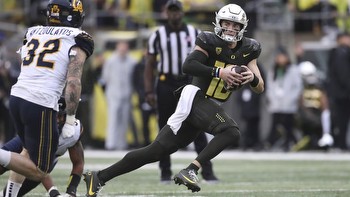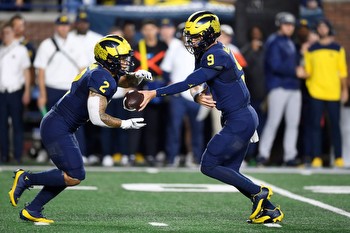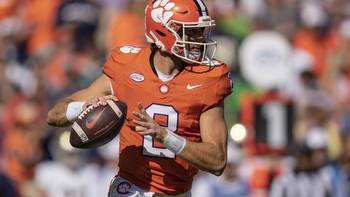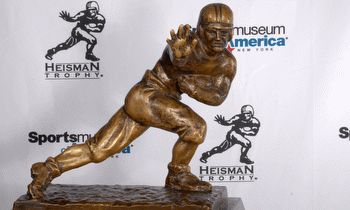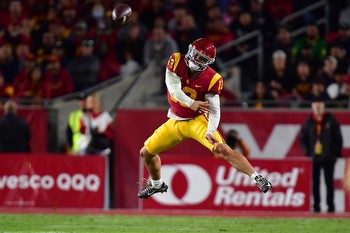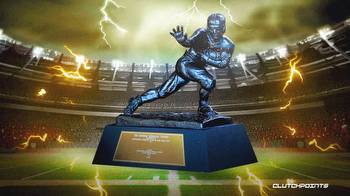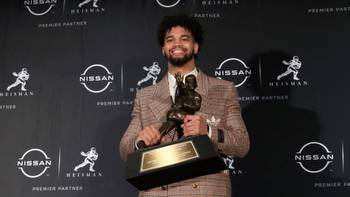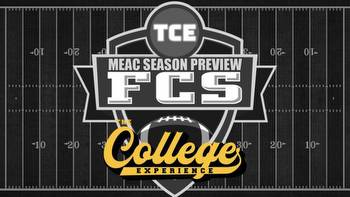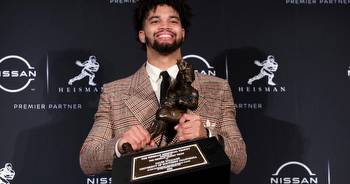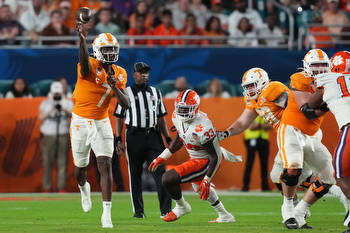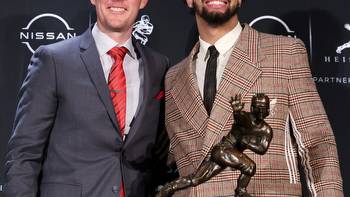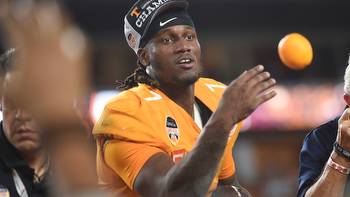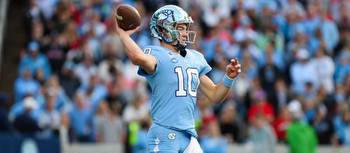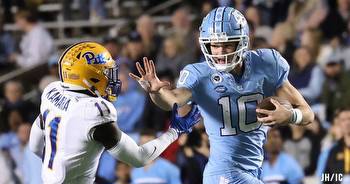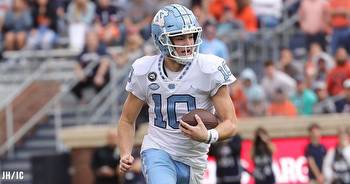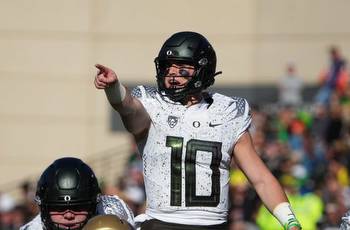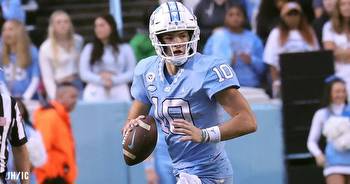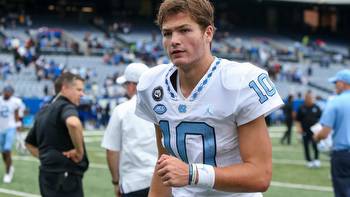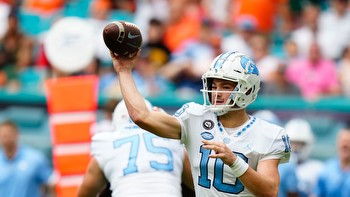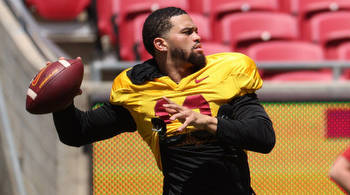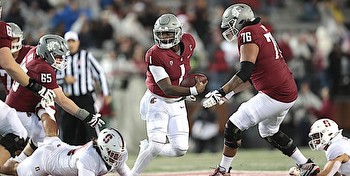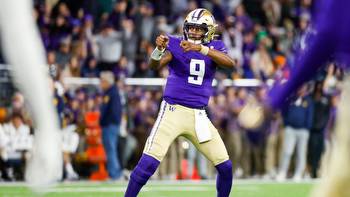Greg: Drake Maye's Heisman Trophy Chances Tied to UNC's Success
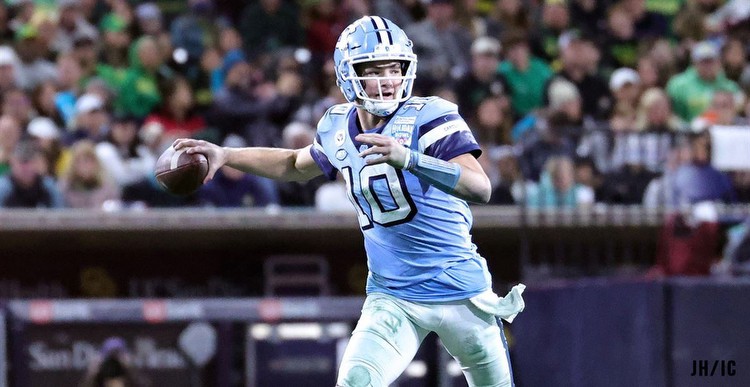
North Carolina quarterback Drake Maye returns for a third and likely final season in Chapel Hill this fall, intent on building upon a breakout redshirt freshman campaign that yielded ACC Player of the Year honors and All-America consideration.
The Tar Heel legacy and Huntersville, N.C. native excelled in Phil Longo’s Air Raid passing attack in 2022, completing 66.2% of his passes for 4,321 yards and 38 touchdowns while rushing for 698 yards and seven scores. He ranked second nationally in total offense per game (358.5) and second in the Power 5 with 45 total touchdowns.
Maye was in contention for the Heisman Trophy deep into November before finishing 10th in the final voting, which marked the fourth time since Charlie “Choo Choo” Justice’s back-to-back runner-up finishes in 1949-1950 that a Tar Heel had finished in the award’s Top-10. He joined impressive company alongside of Don McCauley (No. 9; 1970), Mike Voight (No. 8; 1976) and Julius Peppers (No. 10; 2001).
His statistical resume is chock-full of comparisons to elite college quarterbacks such as Jameis Winston, Johnny Manziel and DeShaun Watson, yet entering his encore season, you have to scroll down the initial Heisman Trophy odds for 2023 to find Maye’s name.
The early frontrunner is USC quarterback Caleb Williams, who won the 2022 Heisman Trophy in his first season in Los Angeles. The contenders include LSU quarterback Jayden Daniels, Texas quarterback Quinn Ewers, Washington quarterback Michael Penix Jr. and Florida State quarterback Jordan Travis. Even Clemson quarterback Cade Klubnik, who threw more interceptions than touchdowns in minimal action last season, has better odds than Maye at sportsbooks such as Caesars Palace, FanDuel and DraftKings.
How is it that a player of Maye’s stature is relegated to second tier status in the preseason for college football’s most prestigious award? While the award is intended to go to the country’s most outstanding player, it has shifted in the modern era to designate the best player that takes the field for nationally relevant and therefore championship-quality programs. It’s no coincidence that Daniels, Ewers and Klubnik play for teams projected to rank Top-10 in the polls this fall.
Maye’s rise to Heisman Trophy consideration last season corresponded with UNC’s success in building a 9-1 record and climbing to No. 13 in the College Football Playoff rankings by mid-November. The Tar Heels lost their final four games to free fall out of the national rankings, thereby eliminating Maye’s Heisman Trophy chances in the process.
UNC has won at least 10 games only seven times in the past 50 years and its last ACC title came in 1980, which provides perspective in the challenge ahead for Maye to earn an invite to New York City in December for the Heisman Trophy presentation.
Since the turn of the century, 16 of the 23 Heisman Trophy winners played for Power 5 conference champions, 19 played in major bowl games and 18 played for teams that finished Top-5 in the final AP rankings, seven of whom played for the nation’s No. 1-ranked team. UNC’s lone Top-5 finish in the AP Poll’s Top-5 came in 1948.
Eight of the past 10 Heisman Trophy winners have either played in the national championship game or in a College Football Playoff semifinal game.
Of the quarterbacks to win the Heisman in the new millennium, there is a notable difference in requirements between pocket passers and dual-threat signal-callers. There have only been five Heisman-winning quarterbacks to play for teams that failed to win their conference titles and ranked outside of the AP Poll’s Top-5 and four of the five were elite playmakers.
In 2001, Nebraska’s Eric Crouch was a running back playing quarterback for the Cornhuskers (1,510 passing yards, 1,115 rushing yards, 25 total touchdowns). In 2007, Florida’s Tim Tebow became the sport’s headliner with 4,181 total yards of offense and 55 total touchdowns in winning the 2007 Heisman Trophy. Baylor’s Robert Griffin III was even more dyamic in 2011, completing 72.4% of his passes for 4,293 yards, 37 touchdowns and six interceptions and running for 699 yards and 10 touchdowns. Louisville’s Lamar Jackson delivered a similar performance en route to the Heisman Trophy in 2016, throwing for 3,660 yards, 27 touchdowns and 10 interceptions while rushing for 1,601 yards and 18 touchdowns.
Last season, Williams broke the mold under Lincoln Riley’s tutelage. The USC QB completed 66.6% of his passes for 4,537 yards, 42 touchdowns and five interceptions while rushing for 382 yards and 10 touchdowns. The Trojans finished the season ranked No. 12 with an 11-3 record.
Every modern-day version of a pocket passer, such as Maye, to win the Heisman since 2000 has played for a team that won at least 11 games and finished the season ranked inside the AP Poll’s top-15. UNC has won 11 games three times in program history, most recently in 2015, and last finished a season inside the AP Poll’s top-15 in 1997.
A repeat of Maye’s statistics from a season ago may be enough to warrant serious consideration for the Heisman Trophy in December, but only if the Tar Heels prove they deserve consideration for the ACC Championship and possibly even the College Football Playoff by the time Thanksgiving arrives.

